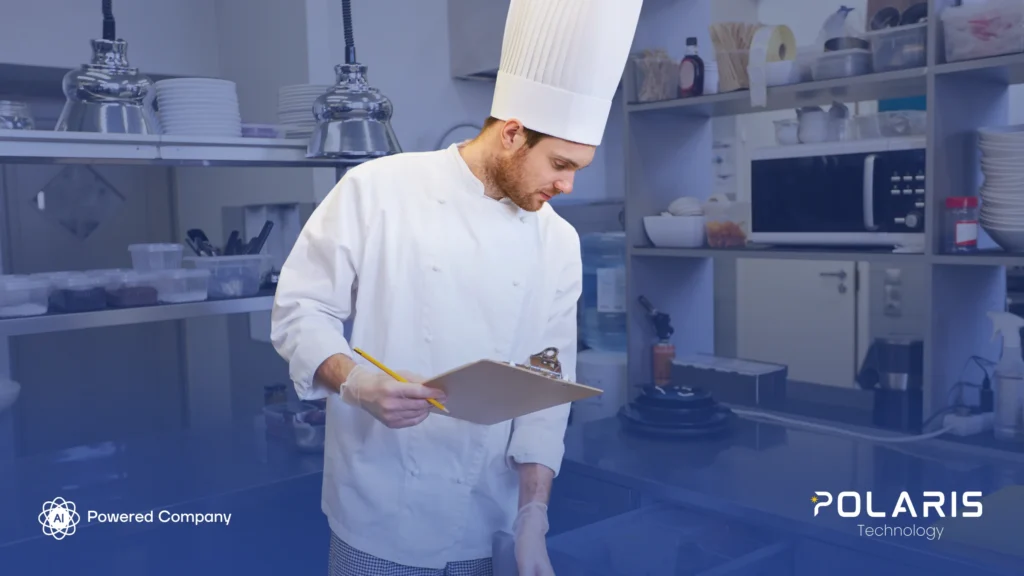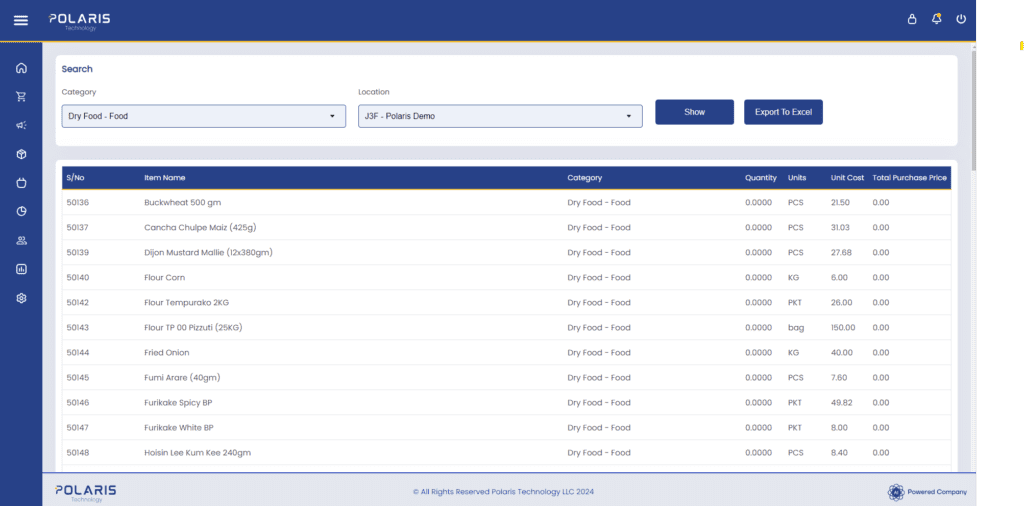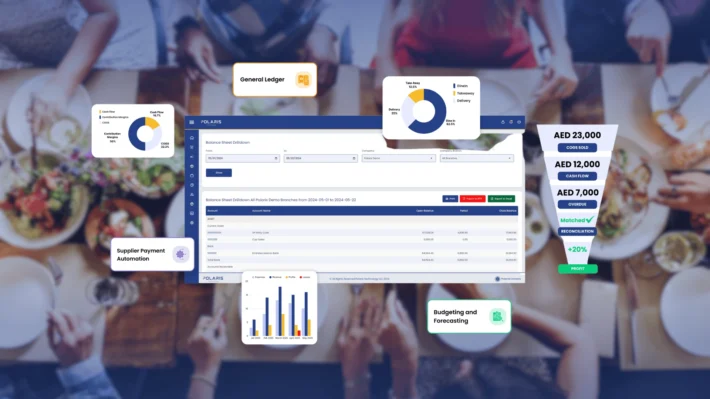7 Proven Strategies to Master Restaurant Inventory Management

What is Restaurant Inventory Management?
Restaurant inventory management is the process of monitoring and controlling all the food items, beverages, and other materials used in a restaurant. It is all about having the right stock at the right time, meaning that the restaurant should not run out of stock of certain ingredients (stockouts) or end up with excess stock that goes to waste (stock waste).
There are specific strategies that F&B professionals can apply to properly manage their restaurant inventory.
We put together seven (7) proven strategies to master restaurant inventory management. Use this as a checklist: go through each suggested strategy and make sure you tick all the boxes.
Mastering Restaurant Inventory Management with 7 Proven Strategies
Conduct regular inventory audits:
Carrying out regular inventory audits in a restaurant is important as they help run the business and increase profits. By conducting a thorough inventory of your stock regularly, you can:
Identify loss
Stock checks allow you to pinpoint conflict between what you have in stock and what is entered into the system. This will assist you in identifying any theft or waste which will also result in reduced costs and increased profits.
Improve purchasing management
This way you will manage to plan your purchases wisely and avoid procurements that lead to food wastage.
Ensure food quality
Inventory audits assist you in planning your ingredients to avoid any supply disruption, as well as to ensure high quality of food, using fresh ingredients, fruits and vegetables or meat.
Enhance kitchen efficiency
It helps in planning the meal by knowing the quantity of each ingredient available in the kitchen, thus reducing wastage.
Apply FIFO (First-In, First-Out) method: A Strategic Approach for Restaurant Inventory Control
First-in-first-out is a basic principle used in managing restaurant food inventory. It enables you to manage the flow of products in such a way that the products with the earliest expiration date are consumed first to ensure that you avoid food spoilage, hence preventing food waste.
How does the FIFO method work?
FIFO assumes that the food items bought or produced first are utilized or sold first, before those bought or produced later. This ensures that the products (from the same category) that have been in the store for the longest will be the first ones prepared and sold to clients.
How can FIFO help the restaurant?
Reduce waste: It enables you to prevent food damage or waste since products that have been on the shelves for a long are sold first.
Save costs: By applying this method, you avoid food spoilage, which addsup to the total cost of goods sold (COGS). So no spoilage = no extra costs to COGS.
Simplify ordering and receiving processes
Ordering and receiving processes are some of the most important activities in a restaurant. These methods can be used to make these processes more efficient and it will translate into increased efficiency, reduced costs, and increased customer satisfaction. There are a few ways through which you can make the entire ordering and receiving process in a restaurant easier.
Implement an electronic ordering system.
The most efficient strategy for enhancing ordering efficiency is through the use of an electronic ordering system. This system will enable customers to place and pay for their orders online or through their mobile phones and the staff will not have to manually enter the order hence reducing human errors.
Offer diverse payment options:
Customers also prefer the option of paying in cash or using their credit cards. It is also advisable to provide the customer with a wide range of payment options to avoid any inconveniences during checkout.
Organize the pick-up process:
It is important to have a clear approach to delivery to avoid delays. There is a way to manage people by numbering or using a screen to display the order number.
Use inventory management software

A software specifically designed for inventory management makes this process easier by offering better tracking and counting of products. Besides, it provides more information on financial and performance data for better decision-making. Moreover, it can auto-reorder stock when the inventory reaches a certain level, to avoid stock depletion.
Inventory Process Improvements and Workflow Efficiency
Software can increase the efficiency of the inventory process by eliminating waste, avoiding manual inputs that can lead to human errors, and decreasing the time required to perform inventory-related activities.
Performing Weekly Stock Counts
The modern restaurant inventory management software comes equipped with easy-to-use tools and processes to facilitate the implementation of weekly stock counts.
Food Cost Variance
This means controlling the costs to make sure they are within the budgeted amount (budget variance). It is important to ensure that the plan is followed to the letter; small changes in any recipe or the menu can lead to major changes in food costs.
Restaurant Inventory Management software provides you with strong insights on food cost variance which is a comparison between the actual food cost percentage of a restaurant and the theoretical one and it is used to measure a restaurant’s food cost efficiency.
Develop and train your employees
Employee training is one of the most important pillars of F&B excellence, because the way the staff treats customers can make or break the decision to revisit your establishment.
Training makes your employees feel more useful and it improves their efficiency, as well as the quality of their work. Also, a well-trained team means lower turnover and higher sales, plus increased customer satisfaction.
In inventory management, an efficient and knowledgeable workforce can reduce the number of mistakes and waste in managing stock levels, managing the costs of keeping stock and the level of service, and ultimately enhancing the quality of the service delivered. In addition, it helps to build a positive corporate culture and enhance the level of commitment and dedication of employees to the company.
Utilize insights from the Menu Engineering
It is a strategy for analyzing the popularity and profitability of regular menu items, to assist in strategically managing inventory and determining prices.
Menu engineering contributes to maximizing profits, focusing on high-margin items, and adjusting inventory according to customer preferences.
Centralize Multi-Branch Inventory Management
Uniform Tracking and Management
Inventory control across all branches is simplified since it is centralized, hence making the tracking of inventory easy. This approach reduces the chances of having ingredient price variations. Another advantage is that it also cuts down on wastage, while at the same time strengthening the quality of data that relates to inventories. The use of centralized inventory control software helps in tracking stock in real-time across branches, which is helpful in decision-making and stock distribution.
Enhanced Inventory Visibility
The centralized systems provide the managers with a tool to quickly determine the status of the locations, whether they are overstocked or understocked. This enables the formulation of suitable strategies about the inventory to restock each branch with the necessary stock to supply the customers.
Operational Efficiency
Centralizing inventory management has a positive effect on the management of inventories since it is done systematically, economically, and within a short time. This strategy is very important for the success of the multi-branch restaurant since it will help in the smooth running of the restaurant and at the same time reduce the costs.
2 Comments
Comments are closed.




[…] a restaurant uses an ERP system for inventory management, the entire process becomes streamlined and automated, reducing the need for manual input. The […]
[…] Implement a first-in, first-out (FIFO) system: […]